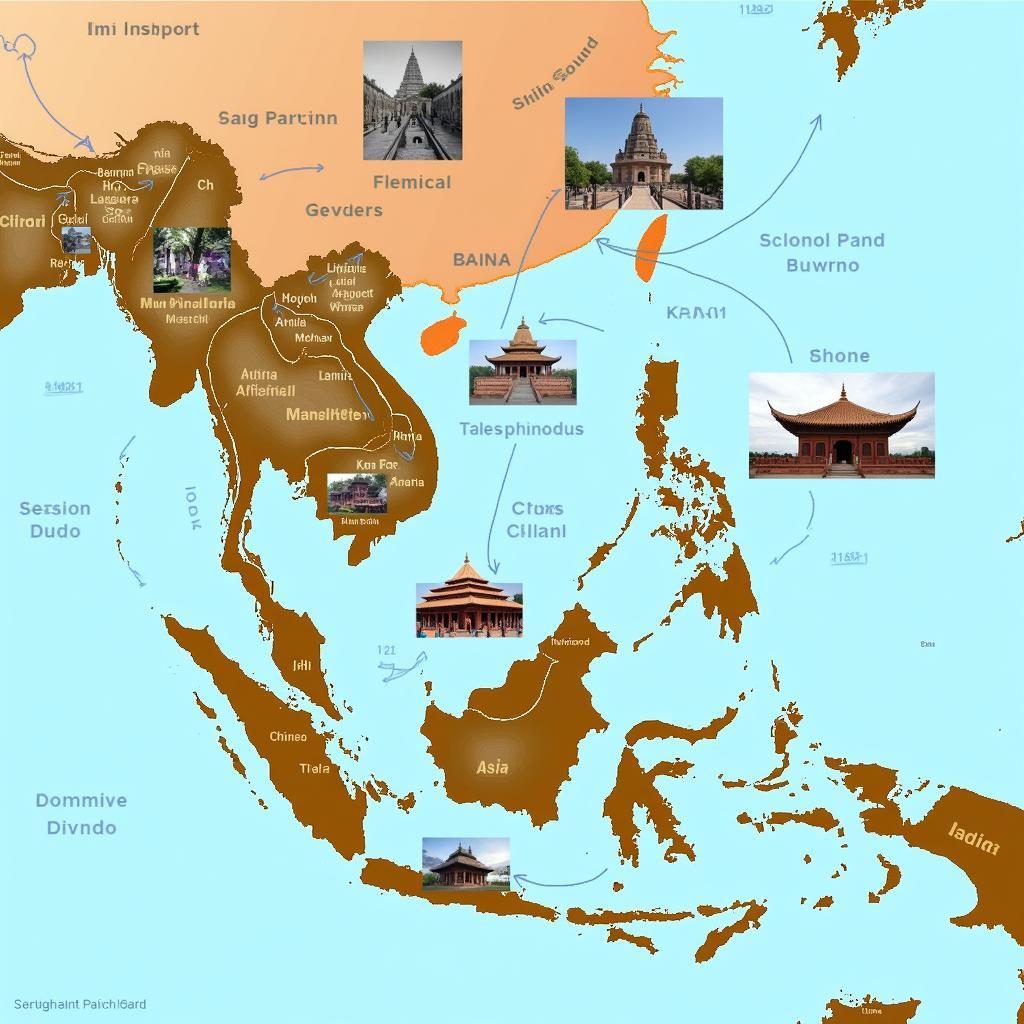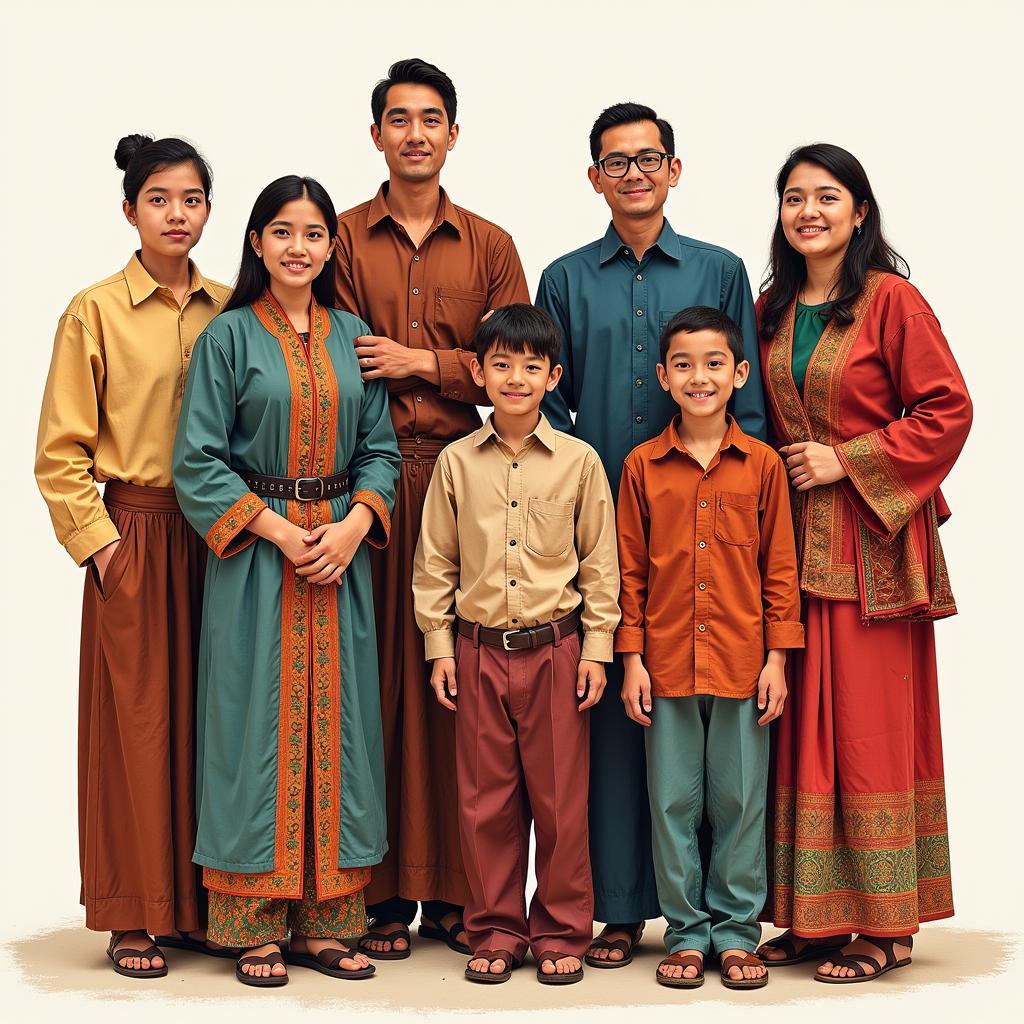Southeast Asian culture, a vibrant mosaic of traditions, beliefs, and artistic expressions, captivates the world with its rich tapestry of diversity. From ancient temples to bustling modern cities, ASEAN culture offers a unique blend of indigenous heritage and influences from India, China, and the West. This article delves into the fascinating world of ASEAN culture, exploring its various facets and highlighting the elements that make it so unique.
Understanding the Diversity of ASEAN Culture
ASEAN culture is not a monolithic entity but rather a collection of distinct cultural identities shaped by geography, history, and social dynamics. Each member state boasts its unique traditions, languages, and artistic expressions. For instance, the intricate batik textiles of Indonesia contrast sharply with the vibrant silk weaving traditions of Vietnam. Similarly, the graceful Apsara dance of Cambodia tells a different story than the energetic Tinikling dance of the Philippines. This cultural diversity is what makes ASEAN so captivating and offers a rich source of exploration for those seeking to understand the region’s heritage. Understanding this multifaceted nature is crucial for appreciating the nuances of Ase Culture. After reading this, you might want to learn more about ase mate.
 Influence of India, China, and the West on ASEAN Culture
Influence of India, China, and the West on ASEAN Culture
The Influence of History and Geography
ASEAN’s strategic location along major trade routes has historically exposed it to diverse cultural influences. The region’s history of interaction with India, China, and European powers has shaped its cultural landscape. Traces of these interactions are evident in the region’s architecture, religious practices, and even culinary traditions. The ancient temples of Angkor Wat in Cambodia, for example, bear testament to the influence of Indian Hinduism. While the prevalence of Buddhism in Thailand and other Southeast Asian countries reflects the spread of the religion from India.
ASEAN Cultural Expressions: A Celebration of Diversity
ASEAN culture finds expression through various forms, including music, dance, literature, and visual arts. Traditional music genres, such as gamelan in Indonesia and pinpeat in Cambodia, offer a glimpse into the region’s rich musical heritage. Traditional dances, often performed during festivals and ceremonies, tell stories of mythology, history, and everyday life. Literature, both oral and written, plays a vital role in preserving and transmitting cultural knowledge.
What are the Key Elements of ASEAN Culture?
-
Religious Diversity: ASEAN is home to a multitude of religions, including Buddhism, Islam, Christianity, Hinduism, and indigenous belief systems. This religious diversity contributes to the region’s cultural richness.
-
Traditional Arts and Crafts: From intricate wood carvings to delicate ceramics, ASEAN countries are renowned for their exquisite craftsmanship. These traditional arts and crafts often reflect the unique cultural identity of each nation. For example, the information on this page relates to amadodana ase wesile joko ya hao.
-
Festivals and Celebrations: ASEAN countries celebrate a wide array of festivals, often linked to religious or seasonal events. These vibrant celebrations offer a glimpse into the region’s cultural traditions and are a time for communities to come together.
Preserving and Promoting ASEAN Culture in the Digital Age
In today’s interconnected world, it is crucial to preserve and promote ASEAN culture. Digital platforms and online resources can play a vital role in showcasing the region’s rich heritage to a global audience. Initiatives such as cultural exchange programs, online museums, and digital archives can help preserve and disseminate knowledge about ase culture. This is also related to ase aarhus adresse.
Expert Insight: Dr. Anya Sharma, a renowned anthropologist specializing in Southeast Asian cultures, emphasizes, “Preserving cultural heritage is essential not only for understanding the past but also for shaping a sustainable future. Digital technologies offer powerful tools for documenting and disseminating cultural knowledge, ensuring its continuity for generations to come.”
Conclusion
ASEAN culture, with its captivating blend of traditions, beliefs, and artistic expressions, offers a unique window into the soul of Southeast Asia. By understanding and appreciating the diverse cultural landscape of ASEAN, we can foster greater cross-cultural understanding and appreciation. The preservation and promotion of ase culture are essential for ensuring that this rich heritage continues to thrive and inspire future generations. Further insights can be found at asea mac mcarthur.
FAQ
- What are some common cultural practices in ASEAN countries?
- How has globalization impacted ASEAN culture?
- What are the major religions practiced in Southeast Asia?
- What are some examples of traditional ASEAN arts and crafts?
- How can I learn more about ASEAN culture?
- What is the significance of ASEAN’s cultural diversity?
- How is ASEAN culture being preserved in the digital age?
Need support? Contact us 24/7: Phone: 0369020373, Email: [email protected], or visit us at Ngoc Lien Village, Hiep Hoa, Bac Giang, Vietnam.


